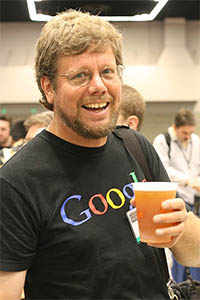The History and Basic Concepts of Python Programming

Photo by Doc Searls.
Python is the brainchild of Guido von Rossum, a Dutch programmer who created it in the early 1990s at Stichting Mathematisch Centrum in the Netherlands. Ownership of the programming language has changed hands several times over the years. The Python Software Foundation (PSF) has owned Python from 2001 to date.
Python is an open-source programming language released under the General Public License (GPL). This means that it can be obtained for free from the official Python website (Python.org), and it can be freely distributed. Being open-source software, Python's development includes contributions from many programmers all over the world. However, Mr. von Rossum remains its principal author.
Python has all the power and flexibility expected from a modern object-oriented programming language. It is however simpler to use than the likes of Sun Microsystems’ Java and Microsoft's C++. It allows you to build software applications quickly by taking advantage of its intuitive syntax. Its flexibility makes it easy to use not only for developing desktop applications, but also as a back-end scripting language for web applications.
Several of the basic concepts that make Python a force to reckon with and set it apart from other fourth-level programming languages are outlined below:
- Python is a cross-platform programming language. This means that a program created using Python can run on any of the major operating systems (Microsoft Windows, Mac operating systems and Linux distributions).
- Python is extensible. There are many free third-party modules that enable Python programmers to include additional functionality in their programs that wouldn't be possible with Python's in-built modules. For example, the Wxpython module – available for free from Wxpython.org – enables programmers to create neat user interfaces for desktop applications.
- Python is a very high-level programming language. It uses a higher level of abstraction than Java and C++, which makes it simpler and faster to process. An example of Python's high level of abstraction is its use of dynamic typing, which allows the programmer to create a variable without setting its type in an explicit declaration statement.
The above short list outlines the very basic concepts that make Python what it is - a force to reckon with. The fact that it is available for free makes it a better option than the likes of Java and C++. Get yourself the latest release of Python from Python.org, and you’ll enjoy programming like you’ve never done before.